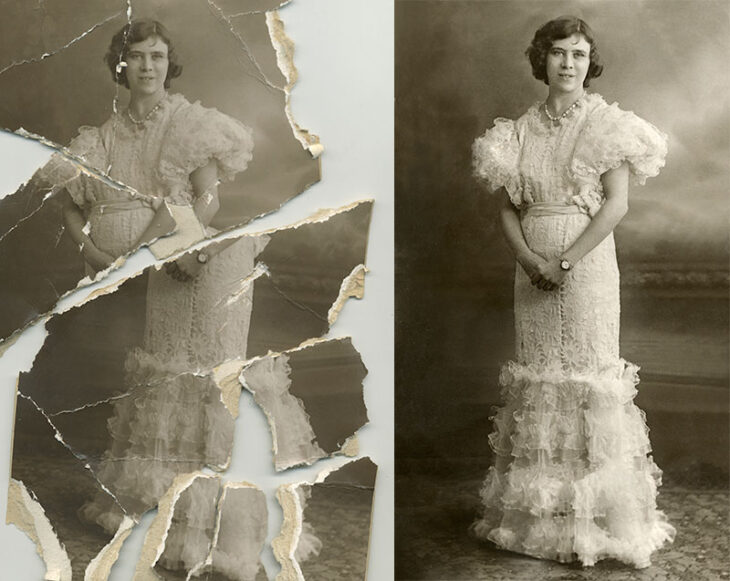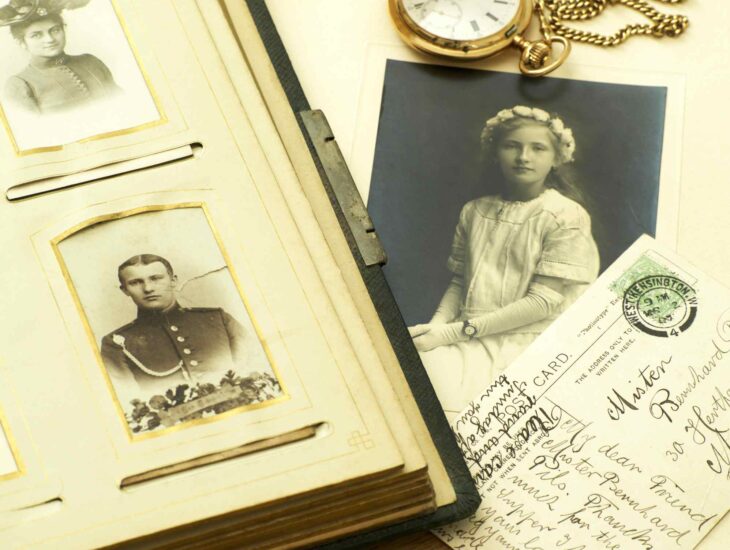Precious family heirlooms come in all forms, such as antique photos of moments long since passed. They can be images of a great-great-great-grandmother or even old sepia photographs of a family homestead – what matters is its historical significance to you and your family.
However, there is one problem: many of these antique photographs can be quite brittle and prone to damage if stored improperly. But regardless of whether you have professionally restored photography or images in less-than-ideal condition, keeping them safe and well-cared-for can make them last much longer.
In this article, we’ll discuss all the things you need to know about keeping your old photos in pristine condition. From why proper storage is essential to how to actually do it, we have you covered.

Source: Amateur Photographer
Contents
Why Proper Storage Is Essential For Antique Photos
While a bit of neglect may not seem like such a big deal, it can mean the difference between an image that survives for centuries and one that disintegrates after a few decades. This is generally attributed to the materials a photo is made from, with many antique images printed on less durable materials. That means proper storage is especially crucial when you’re dealing with vintage or antique photos.
Here are three specific (yet widespread) problems you can avoid when your pictures are correctly stored. To know more visit https://imagerestorationcenter.com/
Your Photographs Won’t Stick To The Glass
Anyone who’s ever framed an old photo will know the pain of finding out it’s somehow attached itself to the glass. Sure, you could pull it off the glossy surface, but you run the risk of ruining the image and leaving bits of the print behind.
That’s because older photos have an “emulsion” layer, which consists of several thin layers of chemicals used to keep the colors intact. Improper storage and framing sometimes allow moisture to seep into the picture frame, degrading the emulsion layer and fusing it with the glass.

Source: The Spruce Crafts
No Mold Growth
Mold tends to grow in damp places, and that includes old photographs. If antique images are left to sit untouched in a humid environment, you may find mold growth start to creep up on your precious prints over time. Storing them in a secure, dry place like a plastic bag will keep this from happening.
Fade-Free Memories
One of the biggest complaints about antique photos is the faded, bleached look. The transition from bold print to a ghostly image is a gradual one, and many people don’t notice until it’s too late.
Displaying your picture in a place away from direct sunlight ensures that the print remains as vivid as the day it was printed!

Source: Photo Restoration Houston
How To Store Your Antique Photos Properly
Now that you know how important proper storage is for keeping an antique photo in top shape, you may be wondering how you’re supposed to do that. Here are the three things you need to keep in mind when preparing to store your precious pictures.
Make Digital Copies
The first step to preservation is making digital copies that can be reprinted and revisited as necessary. While we recommend using a flatbed scanner, you can use a DSLR or phone camera to capture a clear and well-lit digital image of your photo.
Be sure to upload your files to a secure cloud-based service like Google Drive so you can access them anywhere, anytime!

Source: The Gadgeteer
Mind The Environment
As a general rule, there are two elements you need to keep in mind when storing photos: direct light and humidity. Direct sunlight, fluorescent light, and even UV lights can fade your precious prints, turning deep blacks into a milky lavender – resulting in lots of faded detail around faces, objects, and buildings.
Likewise, storing your images in a humid area can turn your thick photographs into brittle sheets. Temperature and humidity fluctuations can separate the color from the photo paper, leading to warping and cracking – two challenging things to fix.
Use The Right Materials
Something many people neglect to consider when storing their photo is the container they use. Old images are particularly sensitive – they need to be held in containers or sleeves made from suitable materials to avoid damage, sticking, and fading. Here’s what you need to know:
- When framing: Acid-free mats will prevent photos from making contact with the glass, while acid-free backboards help prevent the image from deteriorating.
- When using individual sleeves: Keep your antique photos in PVC-free plastic sleeves or bags. You can also label the plastic bag itself rather than writing on the actual print.
- For large quantities of pictures: If you have lots of photos to store, you can sandwich them between two acid-free papers and keep them in a box. Just make sure to keep them away from humid or damp areas.

Source: Family History Daily
Storing Antique Images: Final Thoughts
Antique photographs can be quite temperamental because of how they’re printed and developed. Luckily, the key to preserving old photographs is pretty simple: keep them well-stored and away from humid areas and direct light. Keep our simple tips and mind, and your photos will remain intact for generations to come!
